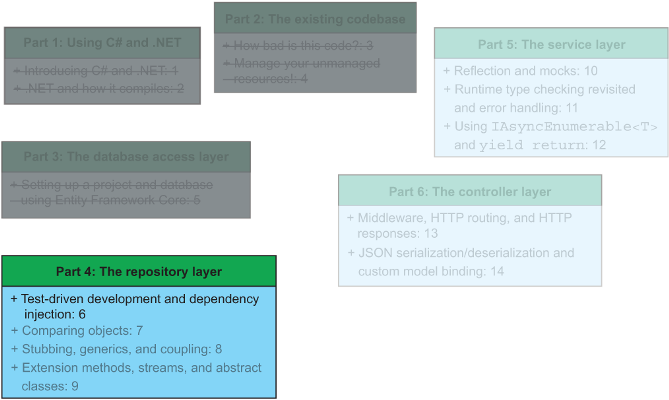chapter six
In chapters 3 and 4, we looked at the codebase we inherited and discussed potential improvements. To solve the issues we found, we started a new version of the Flying Dutchman Airlines service and implemented the database access layer with Entity Framework Core in chapter 5. In this chapter, we’ll start implementing the business logic by moving into the repository layer and creating the CustomerRepository class. Figure 6.1 shows where we are in the scheme of the book.
Figure 6.1 After having implemented the database access layer in chapter 5, we’ll move on to implementing the CustomerRepository in this chapter.

The repository layer is the meat and potatoes of our service. In the repository layer we do the following two things: